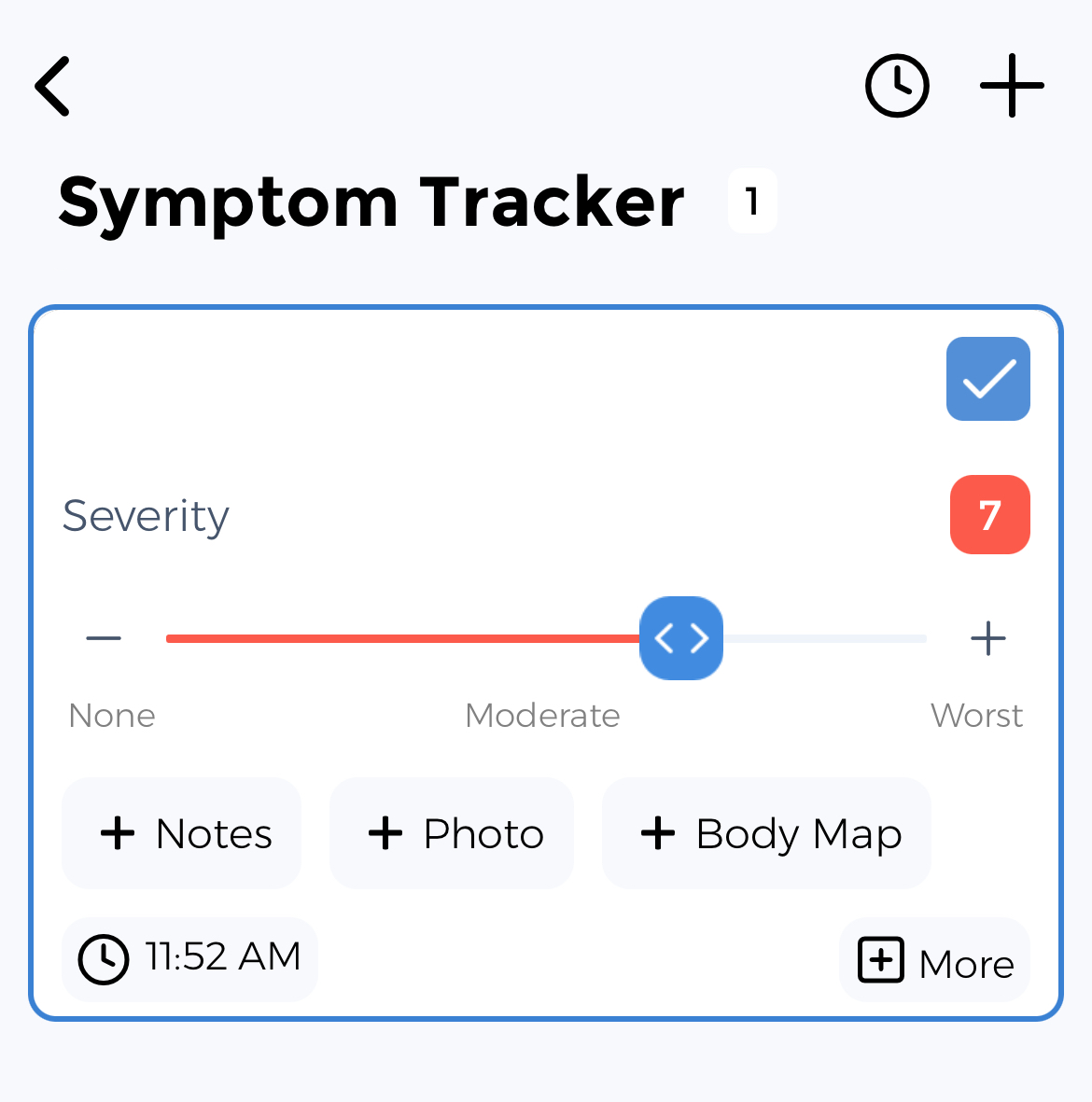Acute Intermittent Porphyria Symptom Tracker: Your Health Assistant
Living with Acute Intermittent Porphyria means dealing with severe abdominal pain, nausea, vomiting, and more. But here's the truth: Data is your most powerful tool. Every logged symptom reveals patterns—so you can take informed action.
Acute Intermittent Porphyria (AIP) is a rare genetic disorder affecting heme production, characterized by attacks of severe abdominal pain, neurological symptoms, and psychiatric manifestations. Tracking symptoms helps identify triggers and monitor disease activity.
Key Acute Intermittent Porphyria Symptoms You Should Track
Struggling with symptoms like these? Tracking them reveals patterns, triggers, and how they impact your daily life.
Severe abdominal pain
Nausea
Vomiting
Constipation
Muscle weakness
Numbness
Tingling
Mental changes
Seizures
Red or brown urine
Tachycardia
Hypertension
Track Your Acute Intermittent Porphyria Treatments
Tracking how these common treatments affect your symptoms can help you and your healthcare provider optimize your care plan:
Our tracker helps you monitor when you take medications and how they affect your symptoms over time.
Standardized Acute Intermittent Porphyria Assessments
Complete these evidence-based assessments in the App to measure your severity and monitor your progress:
⚡ Knowledge Is Your Superpower
The difference between feeling overwhelmed by Acute Intermittent Porphyria and feeling in control starts with data. When you track your symptoms, you transform uncertainty into clarity. Every data point brings you closer to understanding your unique patterns.
It's free to try for anyone—whether you're managing your own condition, supporting a child, helping an aging parent, or assisting a partner. Our tracker adapts to your specific role in the health journey.
How the CareClinic Acute Intermittent Porphyria Symptom Tracker Adapts to Your Needs
Adults
Caregivers
Parents of Children
Young Adults
Your Complete Acute Intermittent Porphyria Management Toolkit
Uncover Patterns & Insights
Map your Acute Intermittent Porphyria symptoms like a detective solving a case.
Understand Your Medication's Impact
Turn guesswork into strategy. See how treatments affect your well-being with clear health insights.
Objectively Measure Your Progress
Use clinically validated tools to objectively measure your progress.
Other Tools You May Like...
Plus 2 more specialized tracking tools available
Access All Tracking ToolsAlso Supports Other Conditions Like
Hereditary Coproporphyria Tracker
Hereditary Coproporphyria warriors use our tracker to monitor Acute attacks: severe abdominal pain, nausea, vomiting, constipation, rapid heart rate, high blood pressure, pain in limbs/back/chest, muscle weakness, numbness/tingling, anxiety, confusion, seizures, reddish-brown urine, Skin symptoms (less common): blistering, fragility on sun-exposed areas.
Hyponatremia (Low Sodium) Tracker
Hyponatremia (Low Sodium) warriors use our tracker to monitor Nausea, vomiting, Headache.
Hypomagnesemia (Low Magnesium) Tracker
Hypomagnesemia (Low Magnesium) warriors use our tracker to monitor Muscle cramps or spasms, Tremors.
Success Stories from Our Community
"This tracker doesn't just collect data - it provides insights. I confirmed that My seizures always peaked 2 days after physical activity, which helped me make better daily decisions."
"My with Acute Intermittent Porphyria became so much easier once I started tracking. Using the symptom tracker revealed patterns in my red or brown urine I never noticed before, giving me confidence I never had before."
Take Control of Your Acute Intermittent Porphyria Journey
Transform from feeling like a passive patient to becoming an informed self-advocate. Join thousands who've discovered new insights about their condition.
Designed by people who understand the daily challenges of managing chronic conditions, we're here to support you and your ❤️ ones.
Download Your Acute Intermittent Porphyria Tracker NowYour Data is Protected
Private & Secure
HIPAA Compliant
GDPR Compliant
Never Sell Data
Your data is yours: You get full control over who can view your information. CareClinic keeps all your data secure and encrypted.
References based on studies by:

